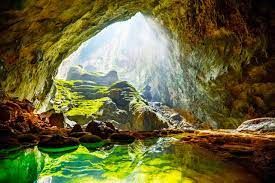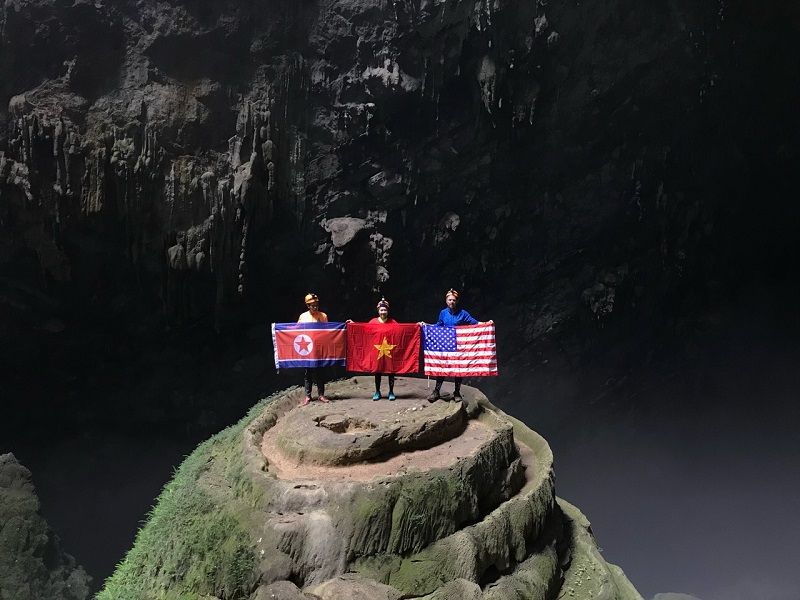
The Majestic Beauty of Phong Nha-Ke Bang National Park
Spanning over 850 square kilometers, this national park is one of Vietnam's most treasured natural wonders. In this article, we will explore the unique features and attractions that make Phong Nha-Ke Bang National Park a must-visit destination for nature lovers, adventure seekers, and history enthusiasts.
Geological Wonders
Phong Nha - Ke Bang National Park is home to some of the oldest karst mountains in Asia, formed over 400 million years ago. The park's landscape is characterized by dramatic limestone peaks, deep valleys, and an intricate network of caves and underground rivers. This geological diversity provides a unique backdrop for exploration and adventure.
One of the park's most famous features is the Phong Nha Cave, which stretches over 7,700 meters. Known for its impressive stalactites and stalagmites, the cave can be explored by boat, offering visitors a glimpse into its majestic underground world. The cave's main chamber is adorned with massive formations that sparkle under the lights, creating a surreal atmosphere.
Another highlight is the Son Doong Cave, the largest cave in the world. Discovered in 1991 and opened to the public in 2013, Son Doong is an adventurer's paradise. The cave is so vast that it contains its own jungle and river. Expeditions to Son Doong are limited and require a multi-day trek, but those who make the journey are rewarded with breathtaking sights that few have seen.
Biodiversity and Conservation
Phong Nha - Ke Bang is not only a geological wonder but also a biodiversity hotspot. The park's diverse habitats, ranging from tropical forests to river valleys, support a wide variety of flora and fauna. Over 2,500 plant species, 140 mammal species, 356 bird species, and numerous reptiles, amphibians, and fish have been recorded in the park.
The park is particularly notable for its primate population, including several endangered species such as the Ha Tinh langur and the white-cheeked gibbon. Efforts to conserve these species are ongoing, with various programs in place to protect their habitats and reduce human-wildlife conflict.
In addition to its wildlife, Phong Nha - Ke Bang is home to many endemic plant species that thrive in its unique karst environment. The park's lush vegetation and pristine rivers contribute to its status as a critical area for biodiversity conservation in Vietnam.
Adventure Activities
Phong Nha - Ke Bang offers a wealth of activities for adventure enthusiasts. Caving is the park's main draw, with numerous caves available for exploration. Besides Phong Nha and Son Doong, other notable caves include Paradise Cave and Dark Cave. Paradise Cave, discovered in 2005, extends for 31 kilometers and is one of the longest dry caves in Asia. Its vast chambers and intricate formations make it a popular spot for visitors.
Dark Cave offers a more interactive experience, where visitors can zip-line to the cave entrance, swim through underground rivers, and navigate mud baths. This cave adventure combines physical challenges with the thrill of exploring a subterranean world.
For those who prefer above-ground activities, the park's rugged terrain is ideal for trekking and hiking. Trails wind through dense forests, up limestone peaks, and along riverbanks, providing opportunities to observe the park's diverse flora and fauna. The park's rivers also offer kayaking and boating experiences, allowing visitors to enjoy the scenery from a different perspective.
Cultural and Historical Significance
Phong Nha - Ke Bang is not only a natural wonder but also a site of significant cultural and historical importance. The region has a rich history that dates back thousands of years, with evidence of human habitation found in some of the park's caves. Archaeological discoveries, including ancient pottery and tools, suggest that the area was once home to early human settlements.
The park also played a crucial role during the Vietnam War. Its dense forests and cave systems provided shelter and hiding places for the Viet Cong. The Ho Chi Minh Trail, a network of supply routes used by North Vietnamese forces, passed through the area. Today, remnants of this history can be explored, offering a poignant reminder of the region's past.
Sustainable Tourism and Community Involvement
Phong Nha - Ke Bang National Park is a model for sustainable tourism in Vietnam. Efforts to balance tourism development with conservation have been successful, ensuring that the park's natural and cultural resources are protected for future generations. The park management works closely with local communities to promote eco-friendly tourism practices and provide economic benefits to residents.
Local guides, many of whom are from the surrounding villages, play a vital role in the park's tourism industry. Their knowledge of the area and its history enhances the visitor experience while providing valuable employment opportunities. Community-based tourism initiatives, such as homestays and handicraft markets, allow visitors to engage with local culture and support the local economy.
Future Prospects
As Phong Nha - Ke Bang National Park continues to attract international attention, efforts to expand and improve its tourism infrastructure are underway. Plans include developing new trekking routes, enhancing visitor facilities, and increasing conservation efforts to protect the park's unique ecosystems. These initiatives aim to accommodate the growing number of visitors while maintaining the park's commitment to sustainability.
Conclusion
Phong Nha - Ke Bang National Park is a destination that captivates the imagination with its natural beauty, geological wonders, and rich biodiversity. From the awe-inspiring caves and rugged landscapes to the vibrant wildlife and cultural heritage, the park offers a unique and unforgettable experience for all who visit. As a shining example of sustainable tourism and conservation, Phong Nha - Ke Bang continues to inspire and attract adventurers, nature lovers, and history enthusiasts from around the world.